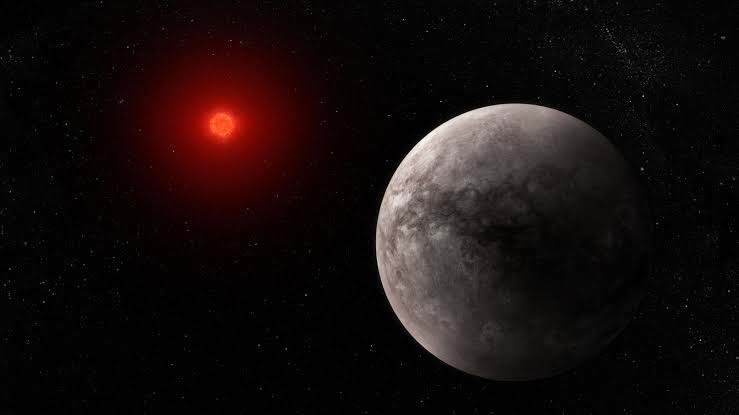In an extraordinary breakthrough, the James Webb Space Telescope has captured a temperature reading of a rocky exoplanet, marking a milestone moment in the search for habitable planets beyond our solar system.
The telescope’s measurements indicate that this exoplanet, dubbed a “cousin” of Earth, is most likely devoid of any substantial atmosphere. The implications of this finding are far-reaching, as an atmosphere plays a vital role in creating a hospitable environment for life to exist.
Without the protection and insulation of an atmosphere, this exoplanet would be vulnerable to harmful radiation and extreme temperature fluctuations that make it uninhabitable for life as we know it.
Trappist-1 System: A Sensational Discovery
In the vast expanse of space, the discovery of the Trappist-1 system in 2017 was nothing short of sensational. The presence of seven rocky planets, similar in size and mass to Earth, had astronomers around the world buzzing with excitement at the possibility of finding habitable worlds beyond our solar system. The prospect of discovering new life on these planets seemed tantalizingly close, but the realities of their environment presented significant challenges.
These planets orbit around an ultracool red dwarf star, which is much smaller and less powerful than our own Sun. Their proximity to this star means that they orbit much closer than the rocky planets in our solar system. The resulting tidal forces, along with the intense radiation from the star, present a hostile environment for life as we know it.
Related: Webb’s Advanced Coronagraphs Shed Light on Exoplanet Mysteries
The Touch-Free Thermometer of Space Exploration
The James Webb Space Telescope, with its exceptional capabilities, has been making groundbreaking discoveries since its first observations. Recently, the telescope’s gaze was trained on the Trappist-1 system, which was an obvious target for scientific investigation. The closest planet to the red dwarf, Trappist-1b, was chosen for its ease of observation. Scientists used Webb’s Mid-Infrared Instrument (MIRI) to measure the change in brightness when the planet moved behind its star, in what is called a secondary eclipse. As the planet almost exclusively shows its “day” side just before disappearing behind the star, this is when it gives off the most light. Elsa Ducrot, a co-author of a new study published in the journal Nature, explained the significance of the findings.
The infrared light that the planet Trappist-1b emits was calculated by scientists using the MIRI instrument. The MIRI functioned like a touch-free thermometer, allowing the researchers to precisely gauge the planet’s temperature by deducting the star’s brightness.
“Pizza Temperature” Found on Trappist-1b by James Webb Telescope
The James Webb Space Telescope has provided a scorching new discovery about Trappist-1b, the “cousin” of Earth. Its dayside temperature was calculated to be a blistering 230 degrees Celsius (450 Fahrenheit), which is almost perfect for baking pizza, according to NASA.
However, France’s Atomic Energy Commission (CEA) discovered that this rocky planet lacks an atmosphere to redistribute the heat, which is typically the job of an atmosphere.
Elsa Ducrot, a CEA astrophysicist, stated that the team would need to analyze other wavelengths to confirm their findings that Trappist-1b has little or no atmosphere. The lack of carbon dioxide in the atmosphere was confirmed, as it would have absorbed some of the light.
Exploring Trappist-1’s Habitable Zone Planets: A Step Closer to Life beyond Earth
Even though Trappist-1b is not thought to be habitable, the finding of the Trappist-1 system still piques people’s interest in the idea of life existing somewhere other than Earth. Trappist-1e, Trappist-1f, and Trappist-1g are three of the seven rocky planets in the system that are located in the habitable zone, an area where conditions are favourable for the presence of liquid water. With the continued exploration of these planets with cutting-edge telescopes in the coming years, the hunt for extraterrestrial life is anticipated to pick up steam.
Conclusion:
The temperature of the rocky exoplanet was discovered by the Webb telescope in a ground-breaking finding that has expanded research opportunities for planets outside of our solar system. In our quest to comprehend the universe and its origins, this important milestone ushers in a new chapter. The knowledge acquired from the discovery will be essential in solving the puzzles surrounding the origin, evolution, and viability of life on other planets. The Webb telescope will undoubtedly be a crucial tool in our quest for scientific understanding as we look to the future of space exploration, pushing the bounds of our current understanding and igniting fascinating new findings.
